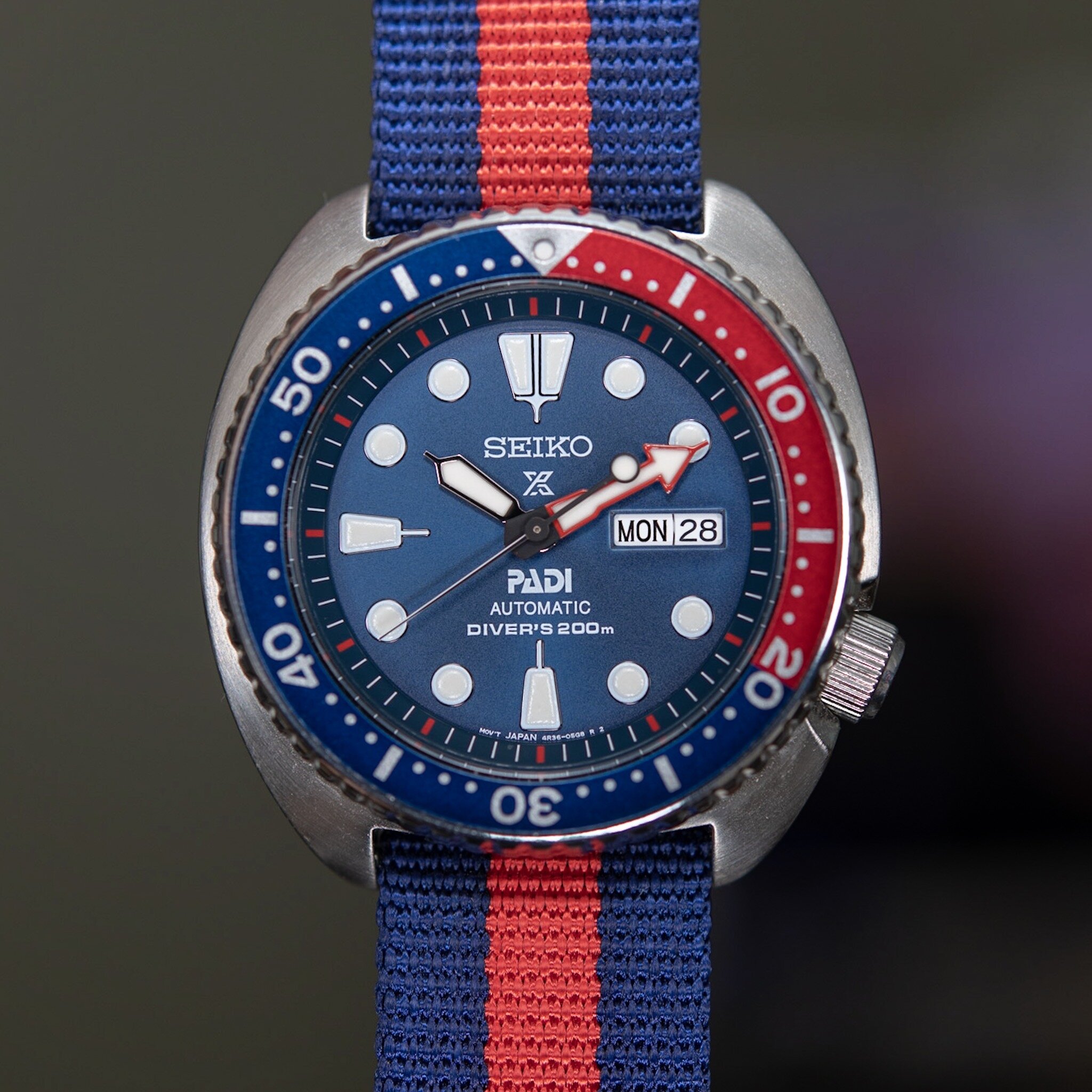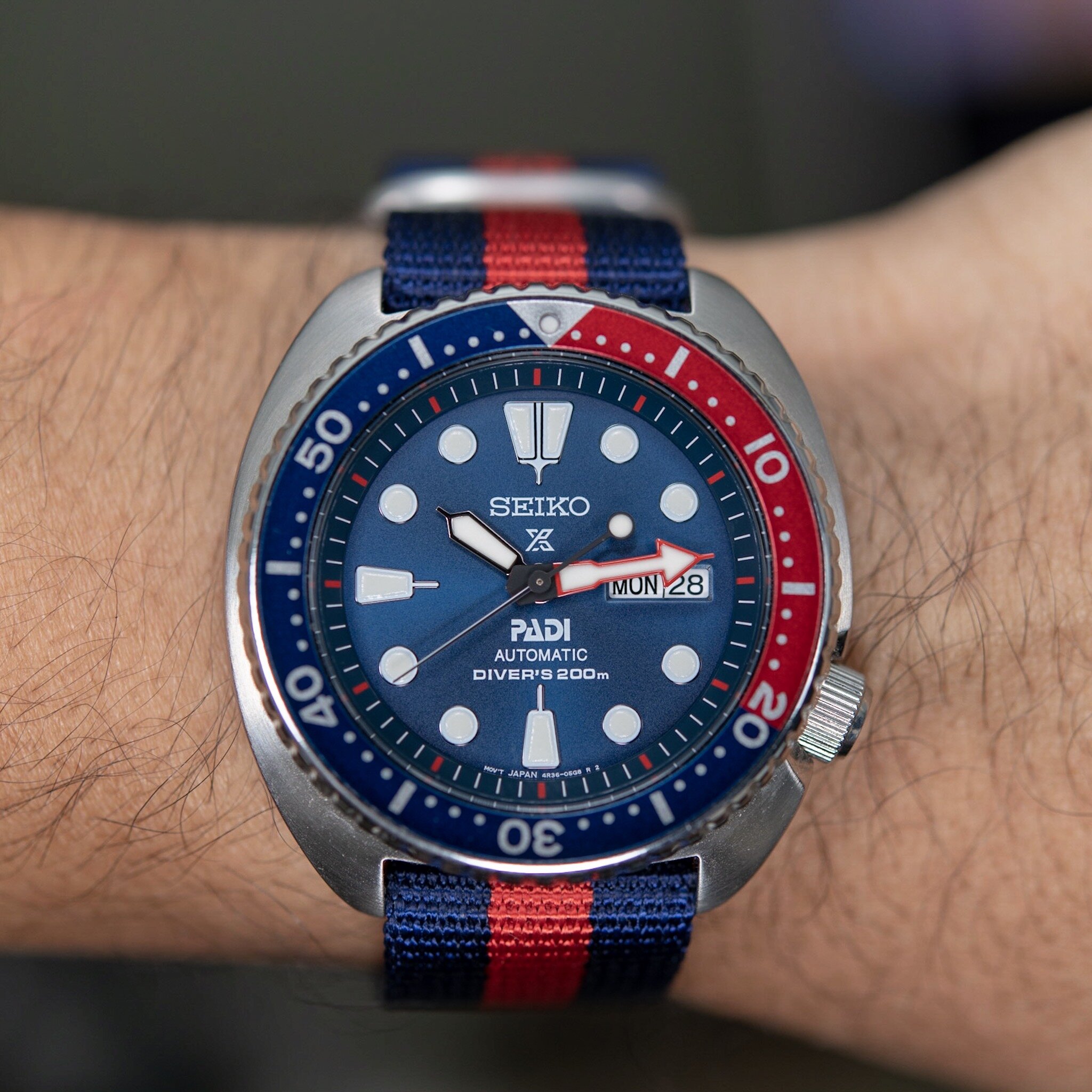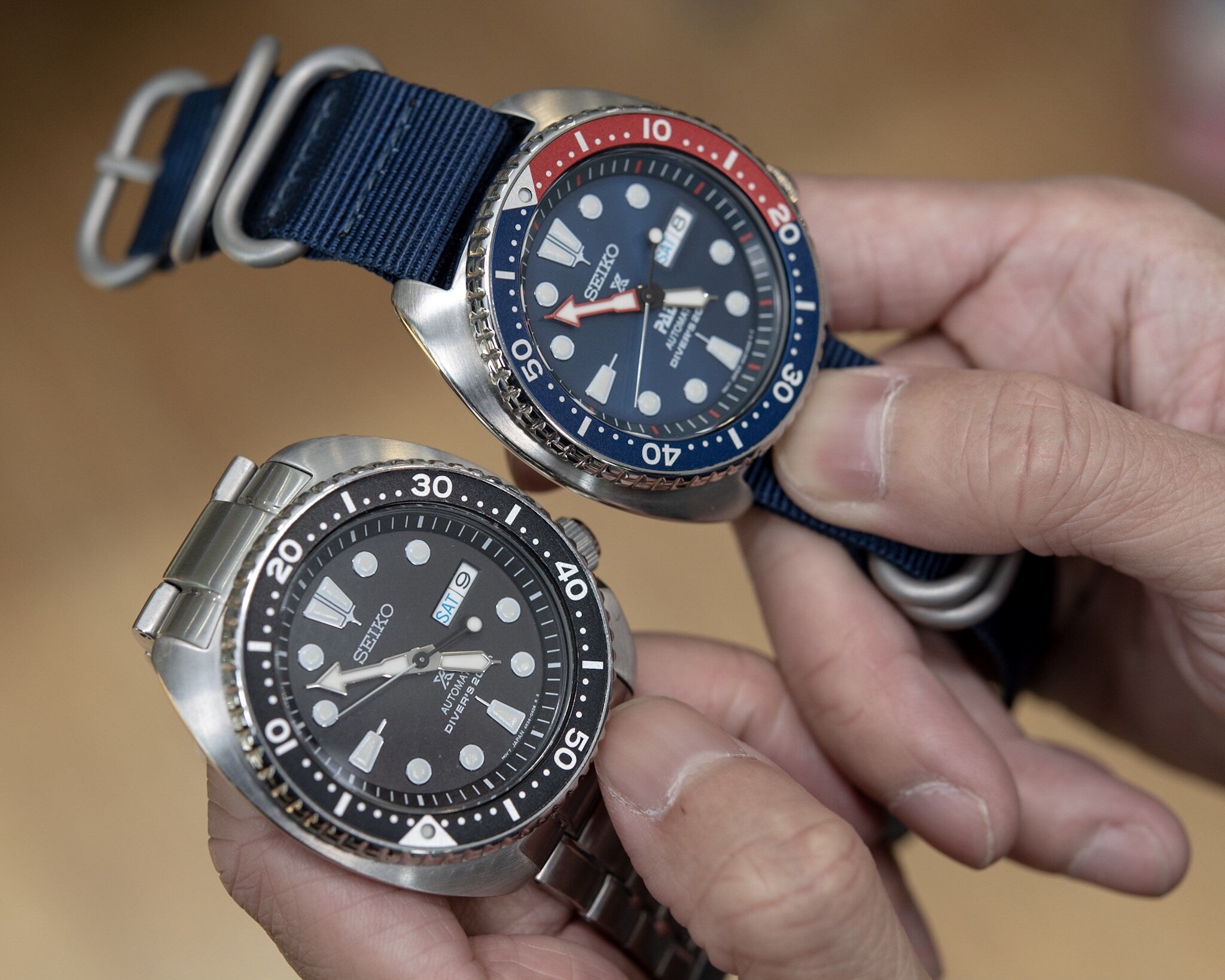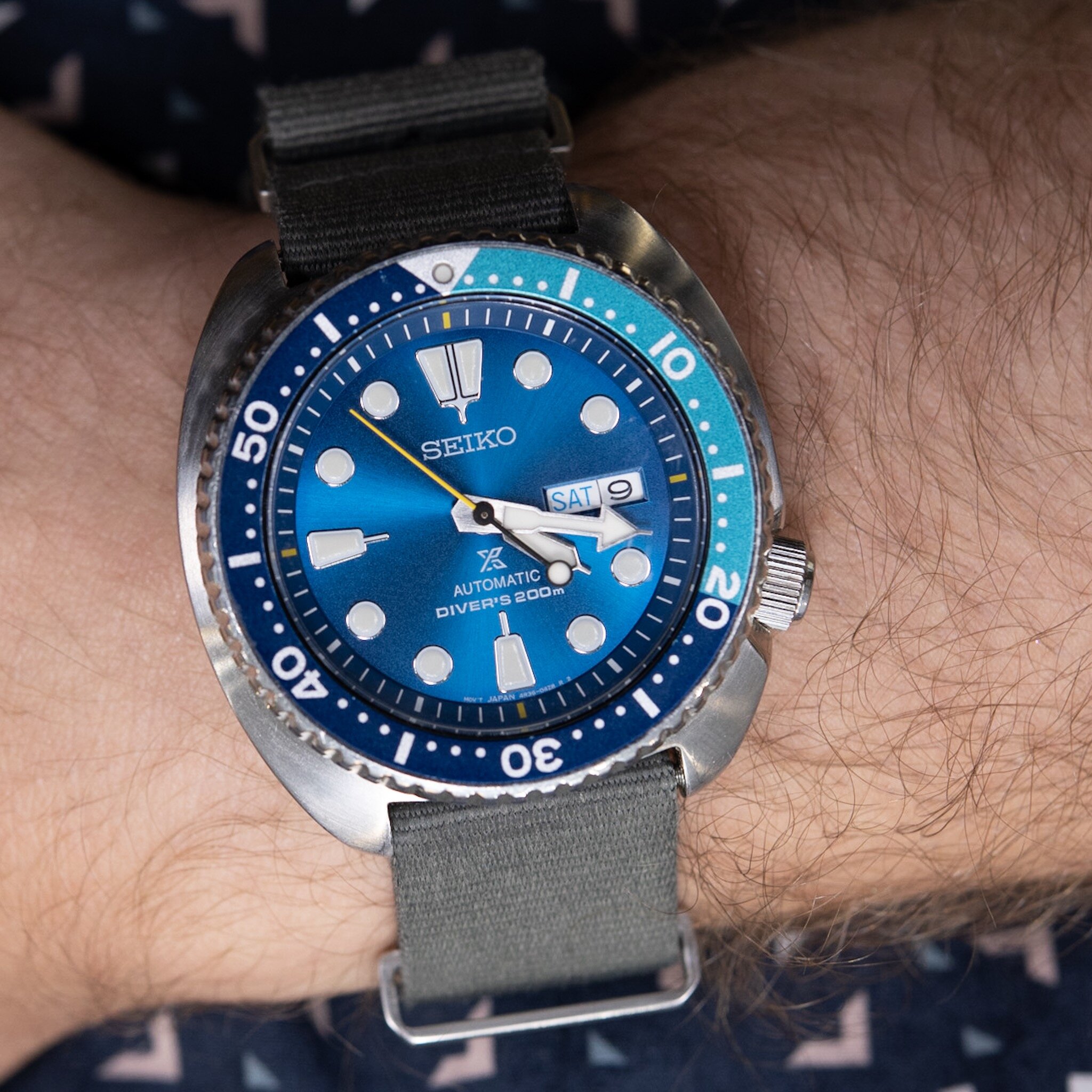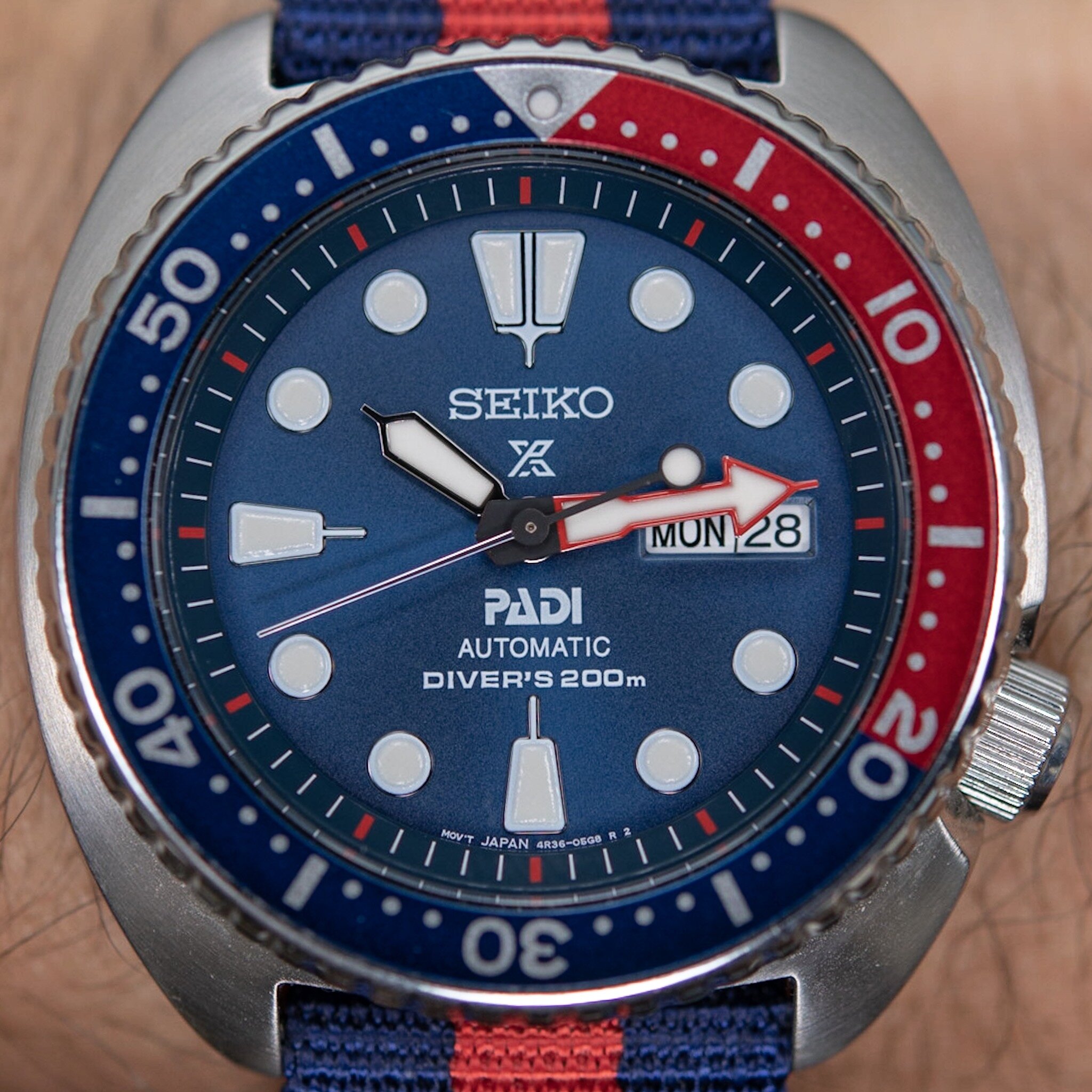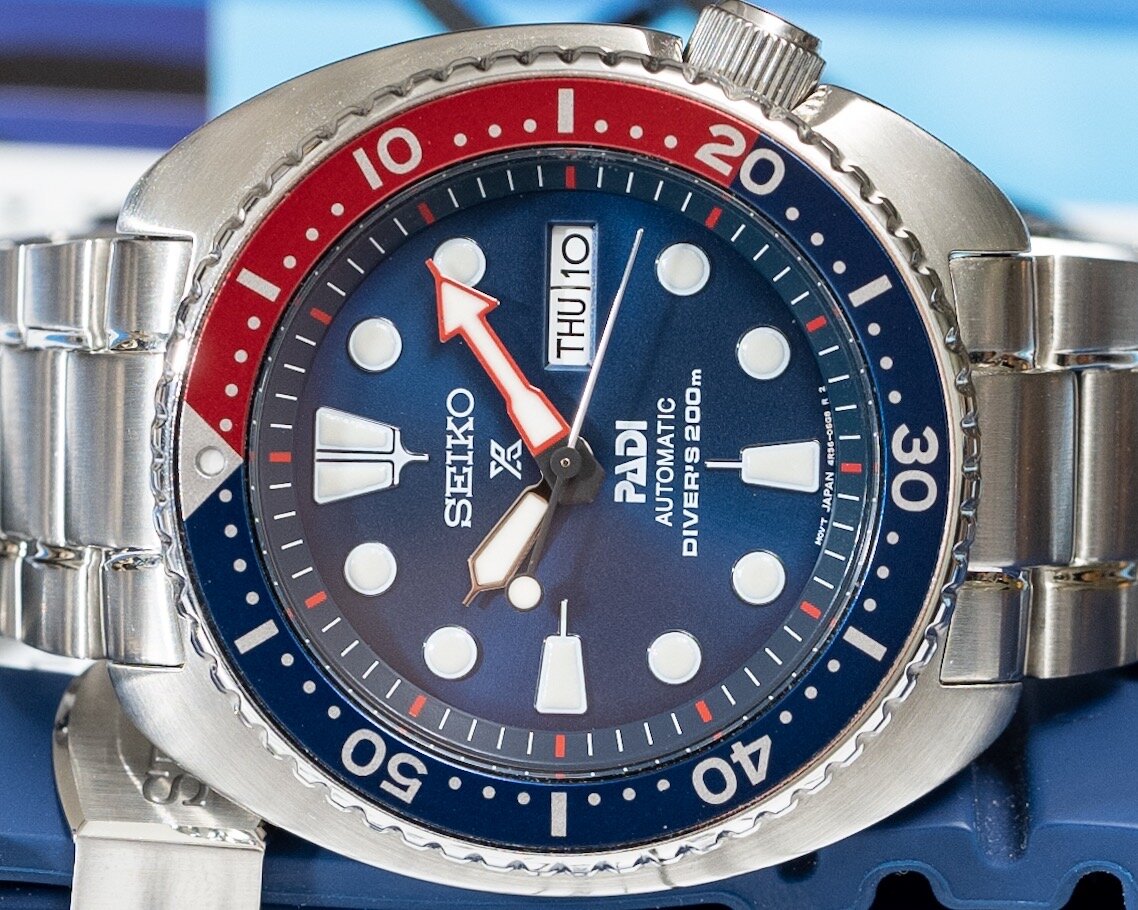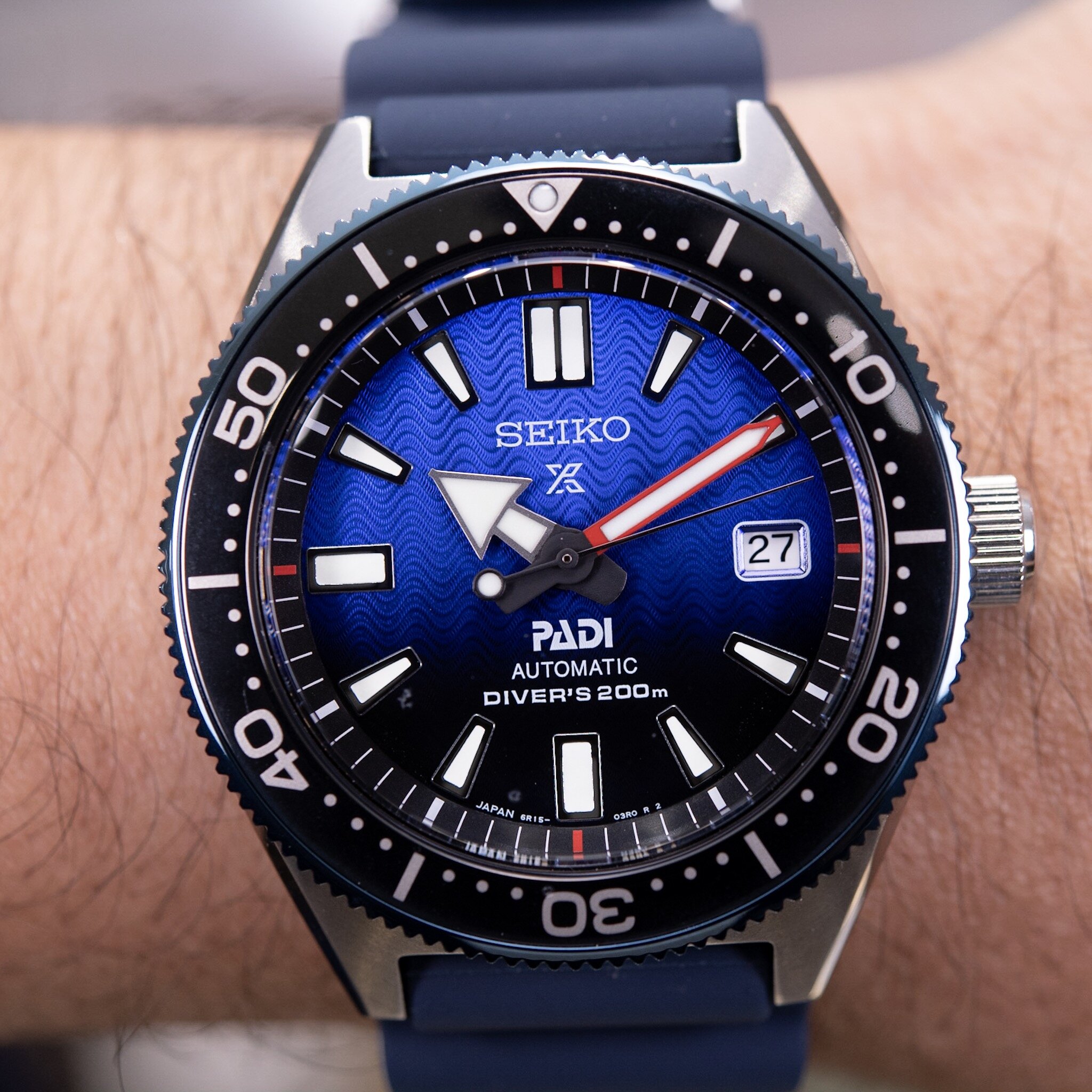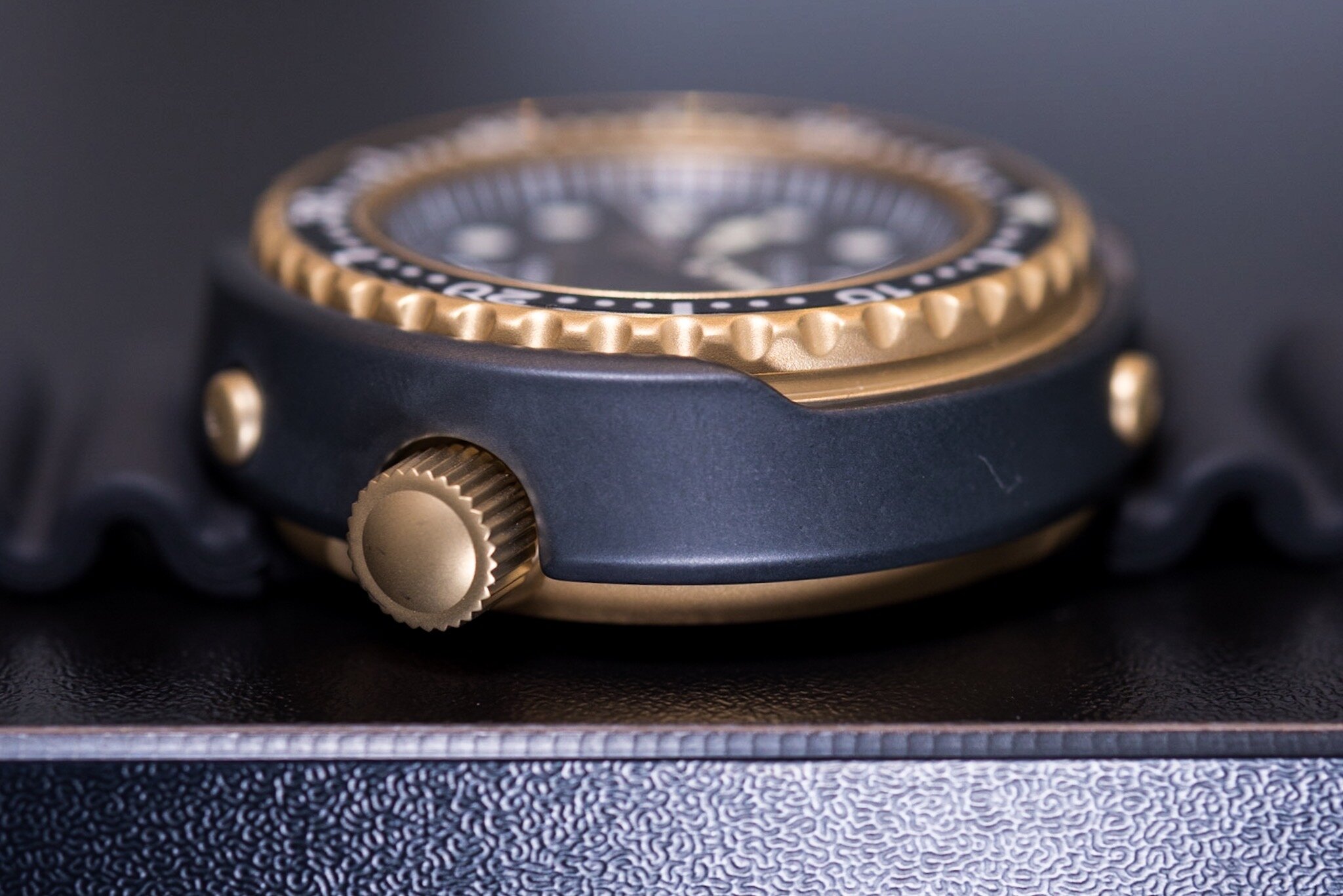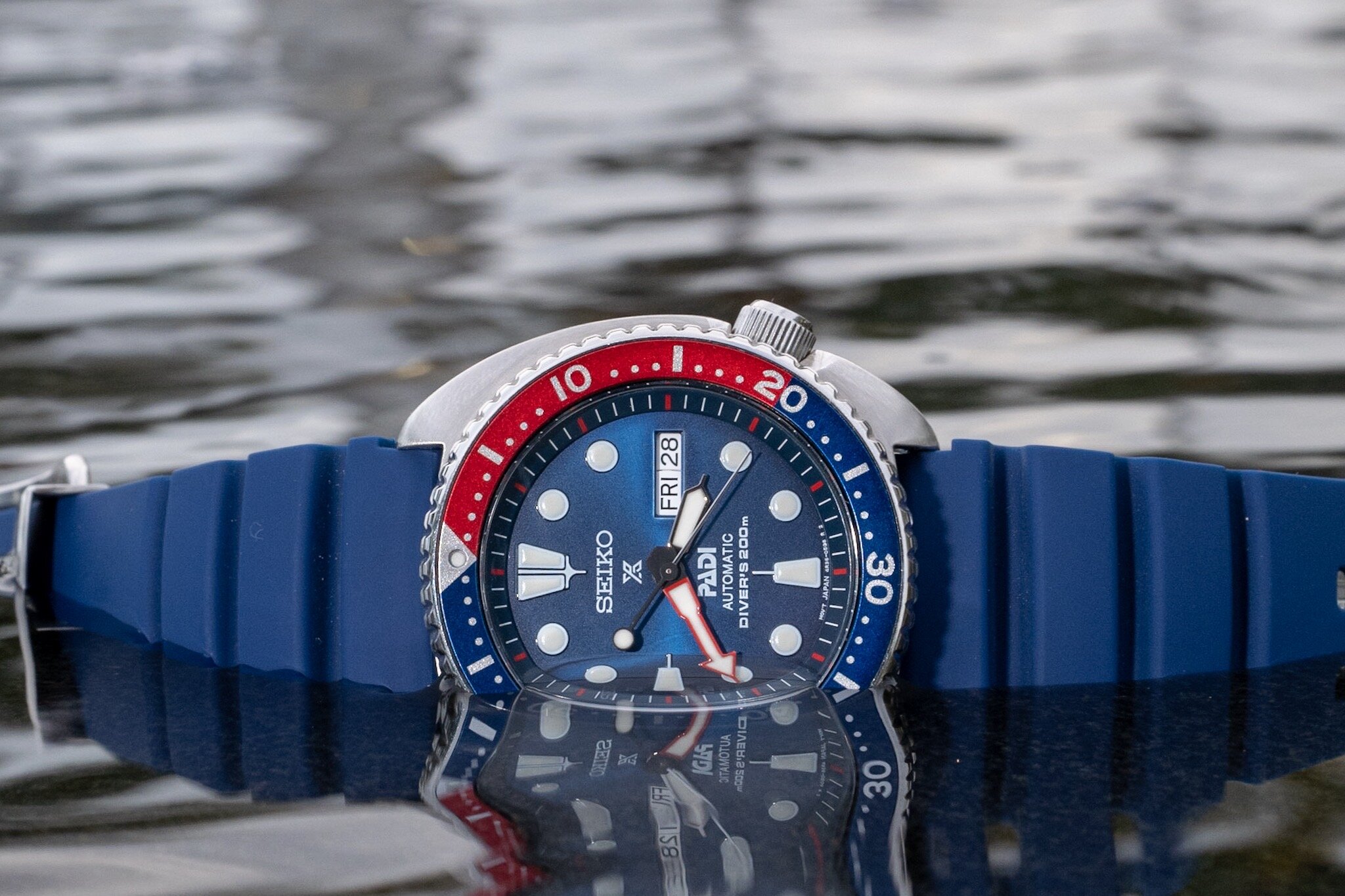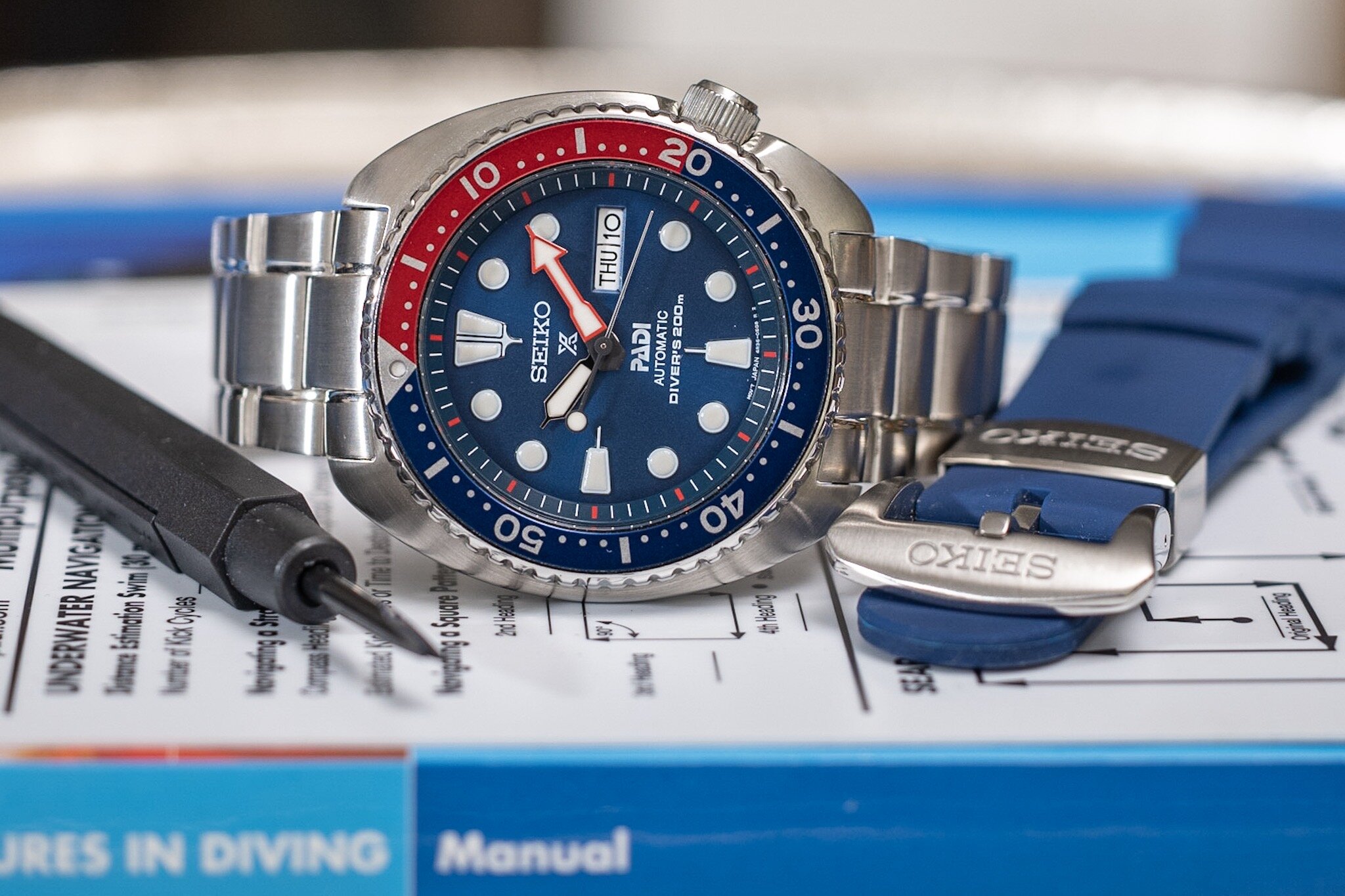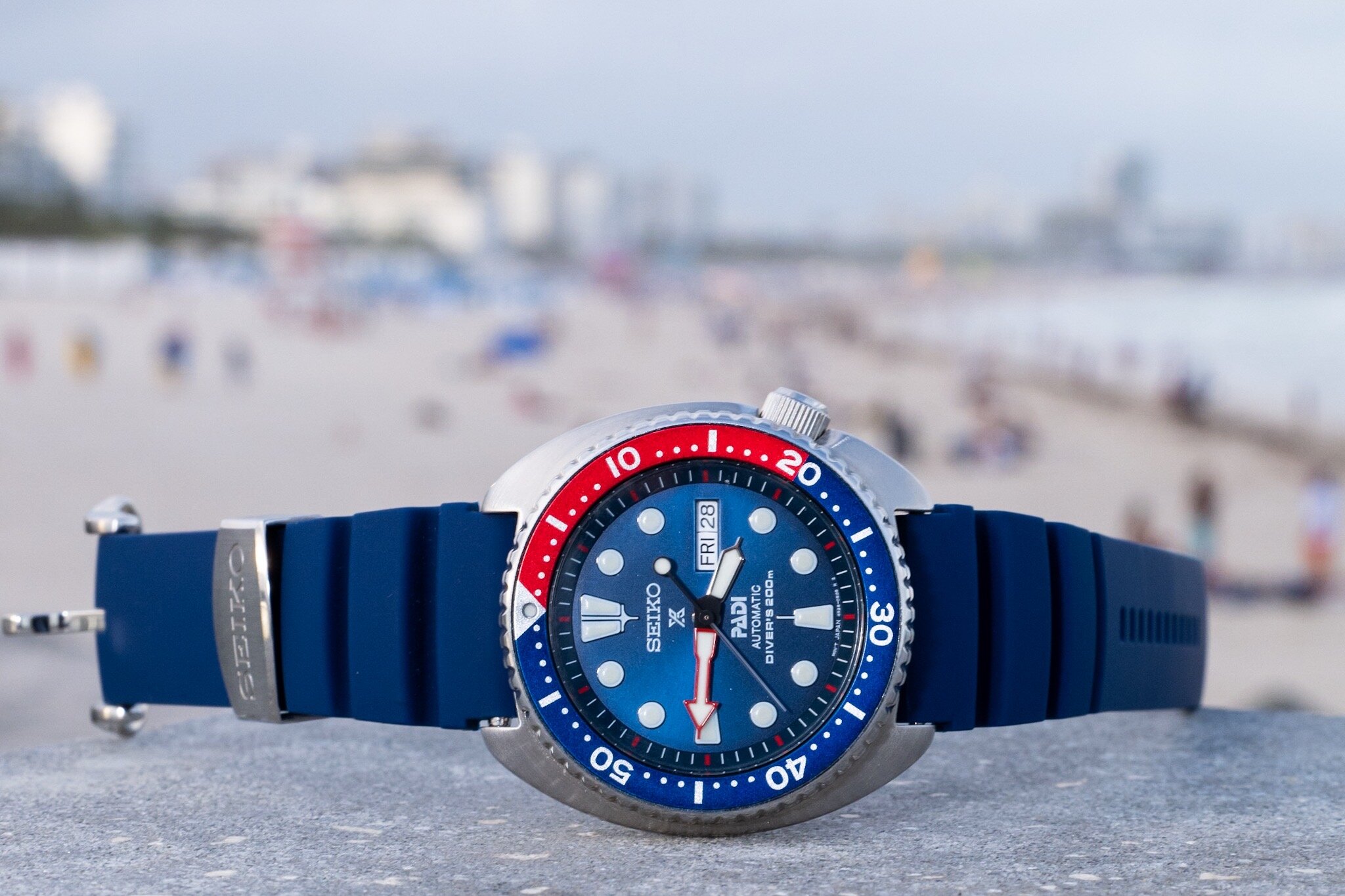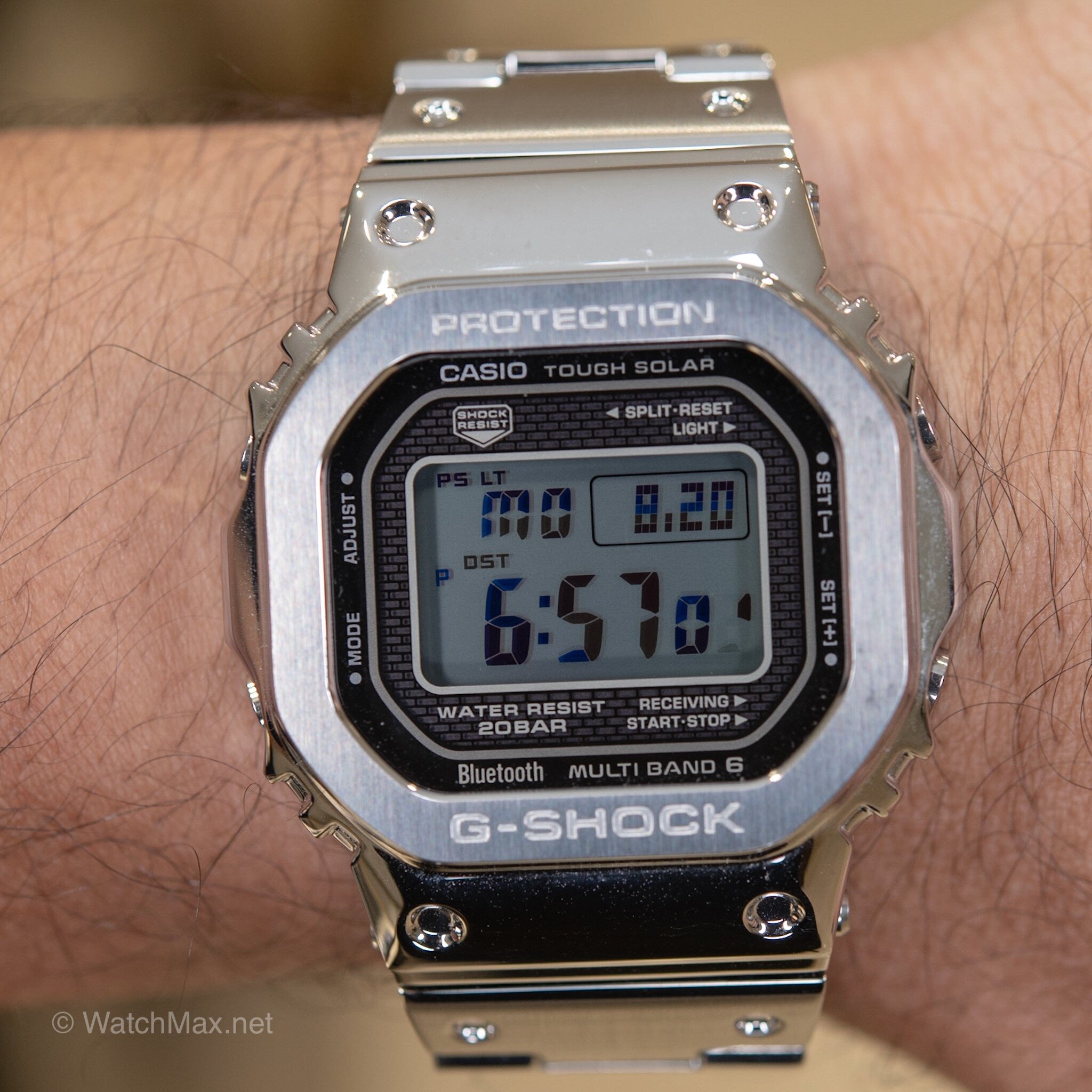Thoughts on my Seiko Prospex Automatic Diver PADI Edition SRPA21P9
Ask most watch lovers about the best entry level mechanical watches in production today and chances are a Seiko’s Prospex (“Professional Specifications”) model will top their list. There are many reasons why this is the case. In this in-depth review of my PADI special edition Prospex, I will explore some of the reasons. It is the first Seiko Prospex I purchased and one that has had a permanent place in my collection since 2017.
Introduction
As one of the most affordable automatic watches widely available (and in many variations) the Seiko Prospex divers have become a cult classic. Various models exist and there are forums dedicated to show owners how to mod various aspects of each watch to make it unique to you. And at around $500 for most models, this is an easy watch to acquire and add to any collection, even if you end up not wearing it much.
For me, the initial PADI special edition model SRPA21P9, released in 2016, was finally the model that made me take the plunge and add another Seiko to my collection. The retail price is $525 and now trends a lot less on both amazon.com and on eBay. I’ve had (in the distant past) other Seiko quartz watches but once I got serious into watch collecting, about 10 years ago, this was the first pure Seiko watch I have acquired since.
The PADI edition won me over not just because I am a PADI master diver but also due to the blue dial and red/blue bezel. In a move that is uncharacteristic for me, I ordered it online once it was announced before even trying it on. Since I expected the dimensions of the case to be similar to other existing Prospex models, which I had tried at Baselworld and at Seiko retailers, this was an easy risk to take.
Before the one I ordered arrived, my girlfriend at the time, knowing I wanted to get it, also ordered one for me. So I ended up with two. I gave one away to the Grey NATO guys as they were starting their podcast at the time and from whom I learned quite a bit about these entry level Seiko divers. I believe it ended up at a good home at one of their listeners, who as I recalled was using it as much as I was.
Models
The Seiko PADI special edition is an evolution of the general Prospex diver model from the brand. Most of the descriptions and discussions here should apply to all models, however, since Seiko makes so many variations of the Prospex diver, I did not take the time to research all variations to see if the dimensions are all exactly the same or if there exist some significant variations. The main point is that the look and feel should be about the same for most of the models.
Seiko Prospex black dial vs the PADI special edition
However, even with the PADI “special edition” watches there exist some variations. This is something one should be familiar with quickly when looking at Seiko watches. It can be frustrating that so many models are available, but I am guessing that the Japanese manufacture is so mature that it is able to crank out these watches at an astonishing rate and for all tastes variations.
Before the end of 2018 there was already three PADI special edition models. For instance, the SRPB99P9 with black dial, the SNE425P9 quartz with blue dial, and the SNE499P9 “tuna can” with black dial. And that does not take into account the typical Japanese-market unique models that most Japanese manufacturers always create.
PADI automatic blue dial
The one I review here was the original special edition PADI announced, the one with blue dial and red and blue metal bezel, the one with reference SRPA21P9. It includes the Seiko Caliber 4R36 movement with 41 hours of power reserve, and with day and date. I am not crazy about the dual indicator cutout at 3 o’clock, but setting the each is rather easy by pulling crown in the first position and turning clockwise for date and counter clockwise for day.
The seconds hand hacks (stops) when the crown is pulled in the second position. You can then set the hour and minutes is as you would expect. Overall, it is great execution by Seiko and one that is difficult to complain about anything missing or that something is drastically wrong.
One of the great strengths of the Seiko PADI and indeed many of the watches in the Prospex collection is how readable and easily settable the hands are. At a glance you can see the time with little confusion with the contrasting hours and minutes hands as they are so differently designed. The red outline of the minutes hand as well as its arrow shape tip make it easy to read the accurate minute. And to complete the dial, the seconds hand is razor thin with a circle at one end to allow some application of luminescence.

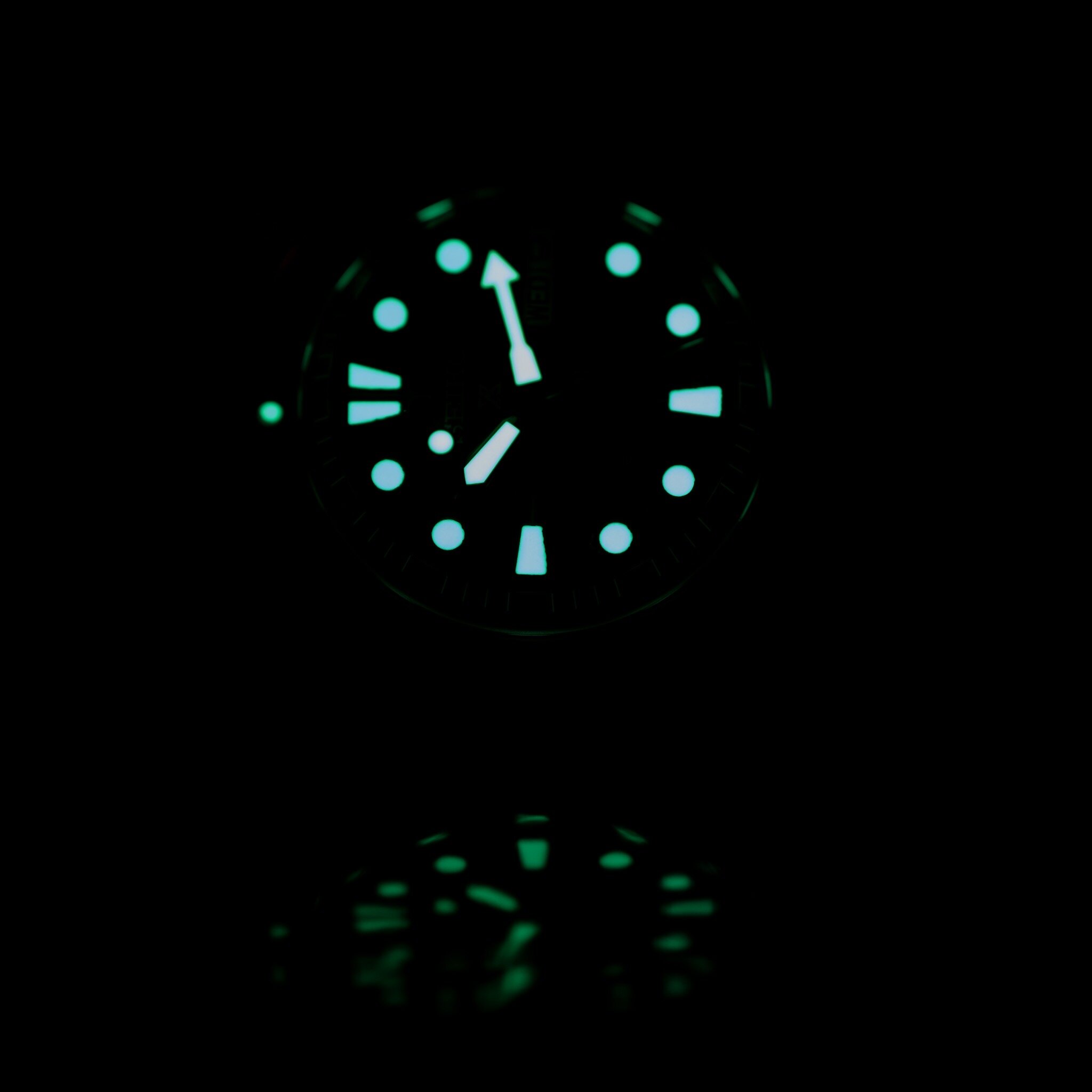

One of the distinctive characteristic of all Seiko Prospex is the lume application to the hands and indices. The application is generous and makes the watch glow with just a little bit of exposure to any external light. It is brilliant though does not last long. There is also tiny bit of lume on bezel for the pearl but not on the bezel itself. The lack of staying power for the lume is a bit disappointing as other divers (Rolex and Omega come to mind) have lume that lasts for hours.
One unique characteristic of this watch is its two color bezel. Seiko chose to make the first 20 minutes of the dial with a red color when the rest is blue matching the dial. This small addition definitely make the watch look better and with the white markers truly sustain the red, blue, and white color scheme. Other Prospex models are done with completely blue or black bezels.
While the bezel is perfectly colored and feels great to grab and to turn. It seems like it would scratch since not in ceramic. It is made of metal. However, it’s worth nothing that mine had not scratched yet. And while I do use it often, I have not taken it diving (an activity that often results in scratched bezel). Overall the turn is easy with a smooth feel and 120 clicks with some play when turning in the other direction.
PADI automatic graduated blue dial
There is a PADI special edition with blue metal bezel, the SPB071J1. The special feature is in the graduated blue dial that gets darker. It reminds of the Rolex Sumariner Deep Sea that was released in 2014 which initially was associated as the model for Hollywood director James Cameron.
However, this PADI special edition comes on rubber, unlike mine which came with a metal bracelet. A wise choice sinceI think the Seiko bracelet is the weakest aspect of the watch. I’ve moved mine on a similar rubber like with the special edition and have never looked back.
PADI “tuna can” model
As I mentioned, the Prospex line from Seiko includes dozens of variations. There are even some models targeted at “street” or “sky”. However, within the “sea” or diver models besides the turtle shaped models like the PADI there are also the round models, or so-called tuna can. These require perhaps a bit more time to be appreciated, but within that group I counted one PADI edition (SRPA83P9) which was priced at the higher end of the line at $795.
Other Prospex models
Seiko also makes Prospex models with a quartz movement. Unlike the blue models this one has a black and yellow dial. It’s quite attractive. However, I have never had a chance to experience it in the metal. It does include Solar technology to recharge the battery with the Sun or external lights, which makes it attractive as a contrasting model to the blue PADI. However, the quartz movement used is not compensated nor very accurate. It is listed at +/- 15 seconds per month.
Finally, there are also the quartz models with chronograph. These for me are the least attractive. Mainly because adding a chronograph to any watch makes the dial more complicated and you have to pay attention to balance the dial. The model I could see from Seiko did none of that. Plus as mentioned above the quartz movement used is not one with any special technology other than being rechargeable with solar power.
Wearability
Part of what makes the Seiko PADI, and the entire Prospex line of Seiko watches, are the case design. It has the “turtle” shape with beveled corners and measures 45 mm wide and 13 mm high with lug-to-lug measurement of 52 mm. The lugs are 22 mm and are drilled which makes changing the bracelet easy. The case is screwed down with recessed stamping of Seiko Tsunami logo on the back. The watch is simply easy on wrist. Especially since on the blue Seiko rubber it weights in a just 122 grams, from the 180 grams on the bracelet.
The location of the crown at 4 o’clock makes it recognizable but also easier to wear since the crown never digs into your wrist no matter how you turn it. The recessed dial make the watch wear a bit smaller as well. The dial is covered with a hardlex crystal, which you would think will scratch more than sapphire but mine has remained spotless so far. However, I think that it’s primarily the short lugs that contribute to the ease of wearability since it never overpowers the average wrist.
As I mentioned, on rubber it’s super easy to wear but I would make sure to get the Seiko-branded rubber straps with articulated ends. I initially purchased a straight third-party rubber strap. I wore it once and tabled it immediately. The problem is that unless the rubber is very subtle (for example, made of high-quality caoutchouc), it will be hard on wrist. The case lug-to-lug is smaller than expected which means the rubber strap will need to flex more than usual. Other wearable options are the many NATO straps that you can match this watch with. I have a couple that I have used. One in navy blue that matches the dial and one in the red/blue combination. On NATO the total weight can go down to 112 grams, adding to wearability.
Quirks
While the Seiko Prospex PADI has a lot to offer, especially at such an amazing price, it also has a lot to be desired. First, the bracelet is simply terrible. It’s noisy and hard to adjust. In fact after trying to size it and successfully doing so, I wore it on bracelet at home for a few minutes and quickly decided to remove it and replace with a NATO and then the rubber strap. I’ve never looked back.
The watch itself has good proportions and tends to seats high on the wrist due to case design. While I like the bezel with its blue and red coloring, the side of the bezel is done in a hobnail pattern to make it easy to grasp and use, however, Seiko decided to give that a high polish and frankly it’s the worst looking part of the watch. It simply looks cheap. I wished it was brushed instead, or done in a pattern that looks less “fake”.
Another quirk with this watch is the lume. Sure it’s bright and is applied to various parts of the dial that make it visible at night. The problem is that the lume does not last long... in my experience it fades after 45 minutes or so and quickly goes completely dark after two hours. I am also not sure how it will hold over time. Likely less bright and lasting even less time. On the other hand currently it can be activated with just a little light, e.g., your phone light.
Finally, the last quirk is that the smooth running movement has OK accuracy and a power reserves of just under two days on full charge. So while you are getting an in-house movement you are getting a lower-grade movement. Needing to move the date and day wheel likely do not help in the power reserve nor the accuracy; even if adjusting the date and day is easier than I expected.
Who is it for? Activities
So who is this watch for? What activities? Clearly for diving and other water sports, though I have only tested it briefly at the beach and the pool. The 200 meters water resistant should suffice for all recreational dives. However, for me it’s a great cheap everyday watch and the perfect entry-level mechanical watch.
At a price point of just above $500 retail, it is a fantastic beater watch, with a unique design that make it recognizable. It is also a perfect work watch when you need to dress down or partake in any heavy manual labor that would result in banging your watch often. As you will see in the following section, there are few other watches that fits this bill. Most come close but never match nor beat it.
Competition
There is a reason why the Seiko Prospex line of watches are often recommended as the best entry-level mechanical watches. They offer a lot for the $500 price point and there are few alternatives. Other than a few dive watches from micro brands that I have yet to experience, I could only recommend two watches that I think come close to what the Seiko PADI has to offer overall.
Casio G-Shock 35th anniversary metal model
First, Casio has an extensive G-Shock collection of watches that are worthy of love from any watch aficionados, but more importantly they too offer serious bang for the bucks. I have reviewed my two G-Shock 35th anniversary models, which at around $500 are probably the best alternative of the Seiko I would recommend. Of course, these are quartz, digital, and connected watches. But if you ignore these last facts, the Casio G-Shock 35th anniversary metal models, like the Seiko PADI, could be interchangeable for their purposes and make for solid everyday any occasion beater watches.
Zodiac is a brand that I would also consider as another great entry-level mechanical diver. And it is one with great pedigree like Seiko and Casio. Their relaunch of the Super Seawolf line is a great example of a Selita-based automatic diver that includes bright colors in its dial. I am particularly found of the white dial with orange accents as well as the blue accented dial. At just above the $1,000 price point this is double the price of the PADI but perhaps a more dressy and uncommon alternative.
Sinn U1 in tegimented steel with rubber bracelet
The other watch that I have experience with that I believe would somewhat compete with the Seiko PADI in it’s universal utility and solid execution is the Sinn U1, especially the tegimented model. Alas, at over $2000 on bracelet, it’s also not really competition but rather a watch I believe offers a solid diver that acts as a great beater while looking good for everyday wear.
Finally, it’s worth mentioning the various “Indy” dive watches you will find from micro brands. I’d stay away from those offering homages to the Submariner or other famous models. However, brands such as Raven, Spinnaker, Nodus, and others seem to have various entry-level Myotta-based mechanical divers that should offer similar value as the Seiko PADI and at a similar price points.
Do note again, however, that while I have handled these indy watches at various events, e.g., Wind^Up San Francisco, I don’t own nor have had the privilege to review any of them. So my experience is limited and I am listing them here mostly based on first experience handling and due to pricing comparison. This is opposite to the recommendations above, where I either own or have reviewed the watches I listed.
Final Thoughts
If I had to reduce my collection to one work, one dress, and one beater watch, the Seiko PADI would likely make the list as the beater. It would be a tossup between it and the Casio 35th anniversary metal model. I will repeat again that the Seiko Prospex PADI is perfect for the small collection with one serious dress watch... It’s easy to afford and perfect for work and can be dressed up and down easily.
The Seiko PADI is a no brainer watch. At $525 new it is a watch every watch lover deserve to try once. Pick the color you prefer, If the PADI blue dial model is not to your liking, and get a matching rubber strap or a NATO strap that is more comfortable than the steel bracelet that came with it. And best of all is that if you end up not wearing it much, then it becomes the perfect gift for the little cousin and brother or friend just getting into mechanical watches. seiko.com


